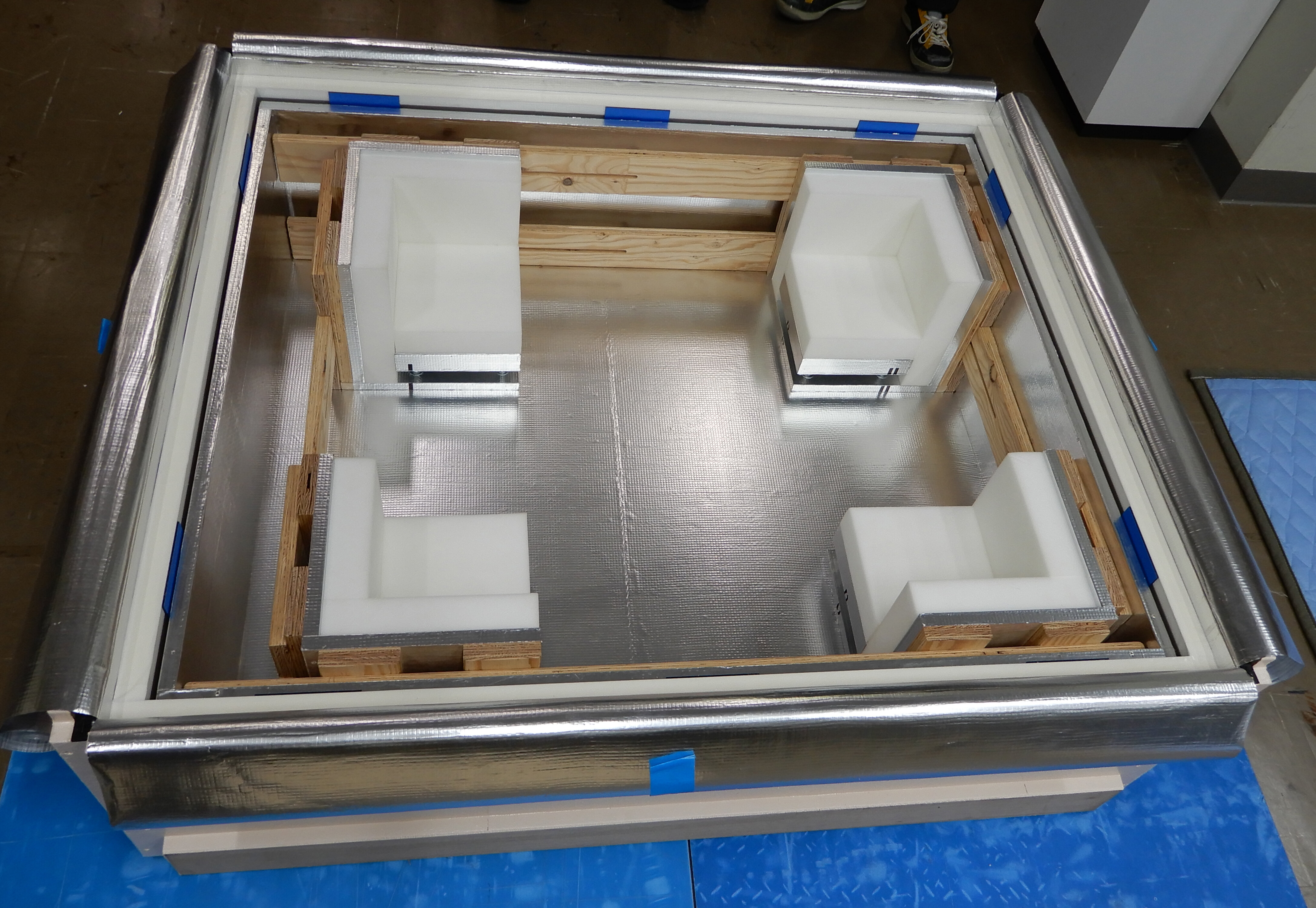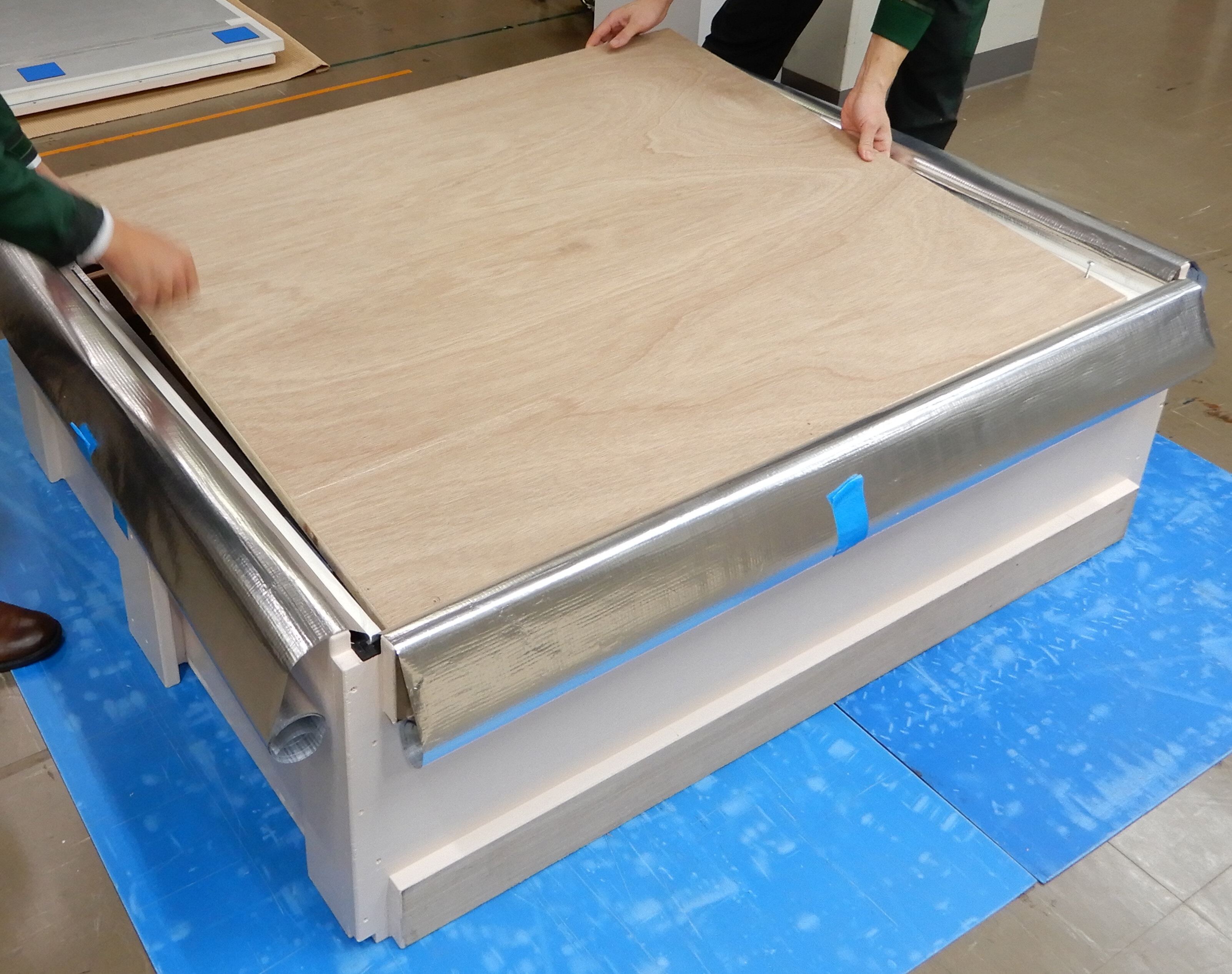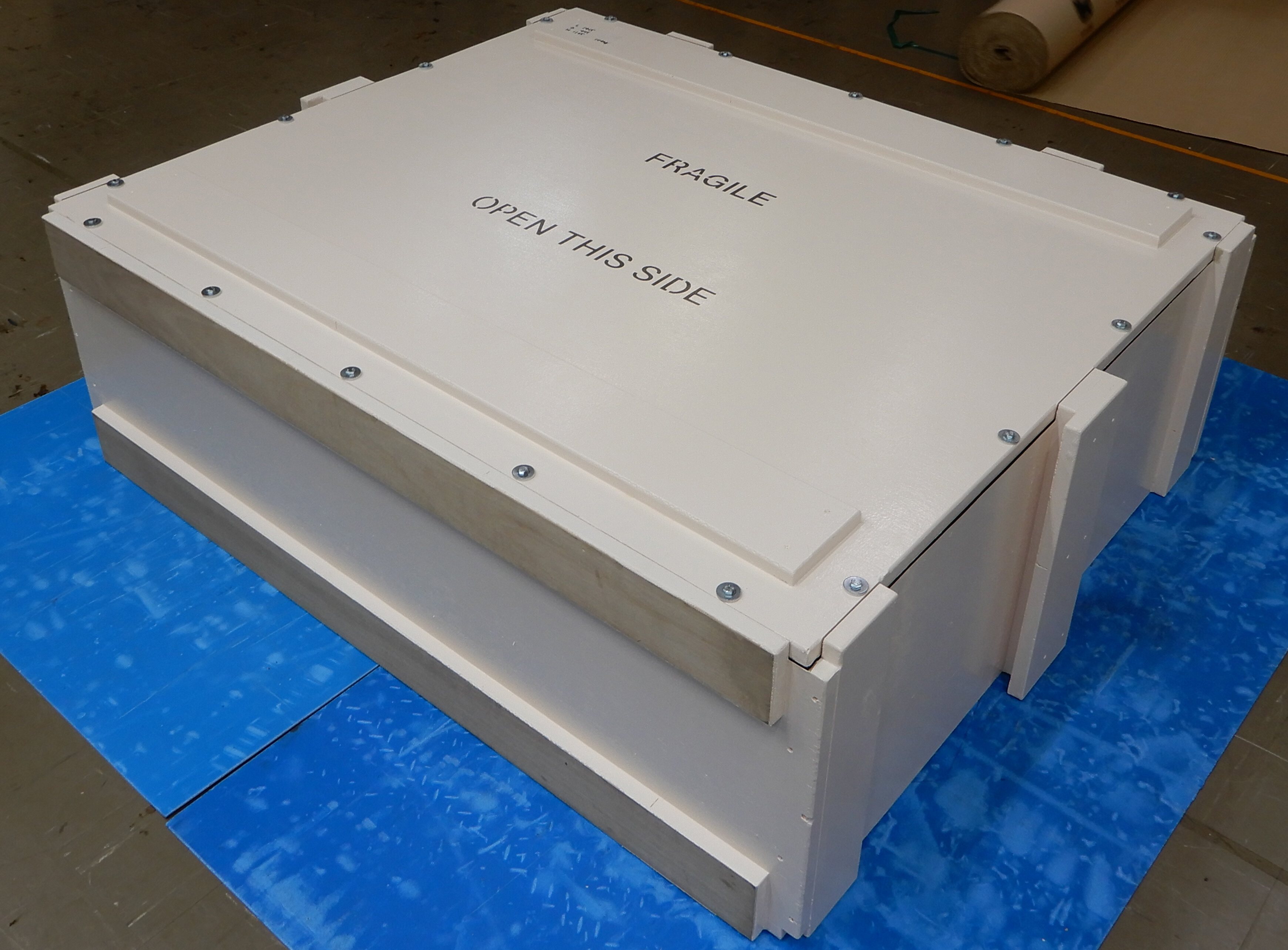Sustainability Efforts at Museums: Production of Reusable Crates for Artwork Transportation
Takashima Miho / The National Museum of Western Art
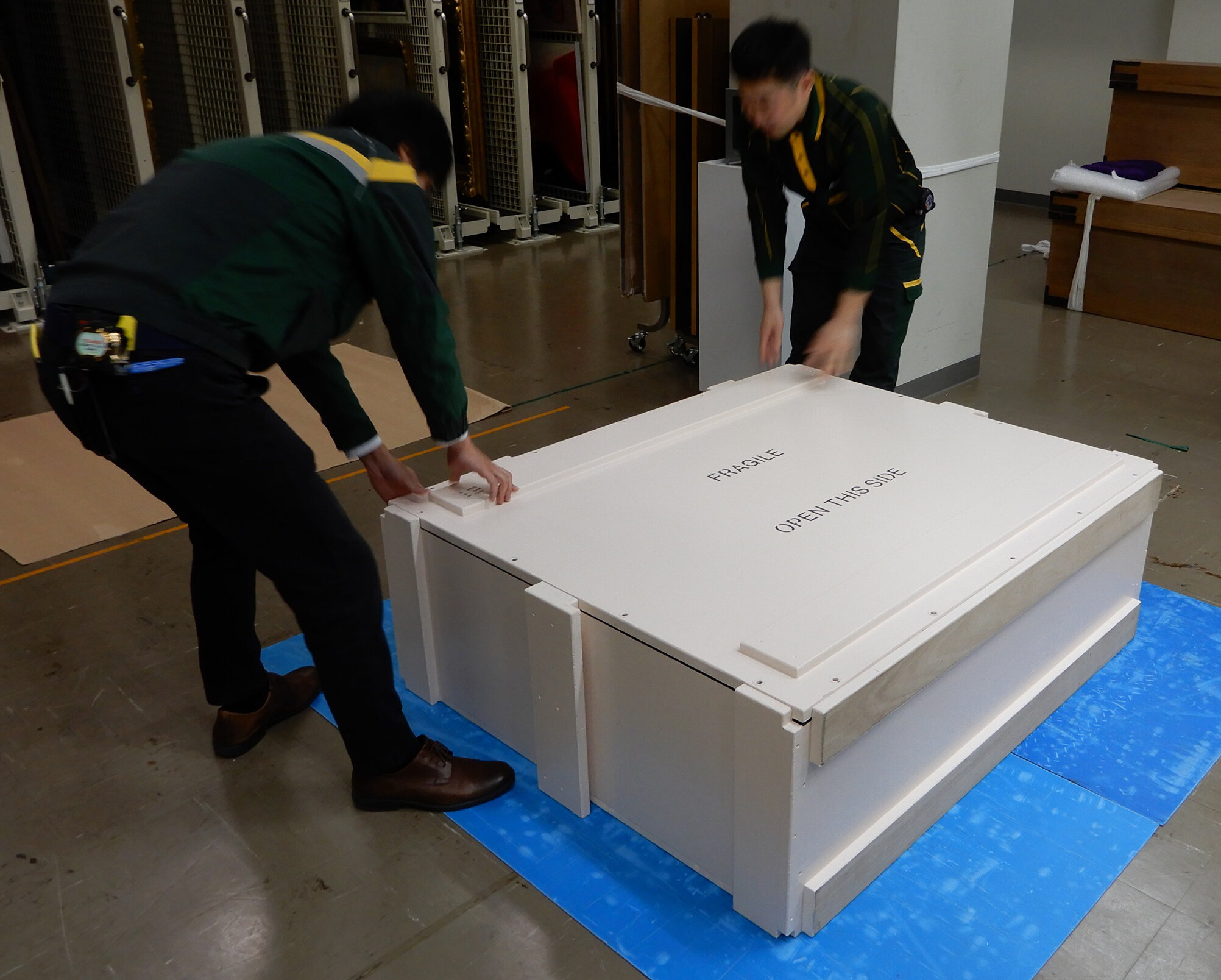
When holding exhibitions, museums’ tasks include transporting and displaying borrowed works of art. Transporting works involves exposing them to potential physical damage from vibrations, as well as to environmental impacts such as changes in temperature and relative humidity(RH). To protect the works from these factors, they are placed in transport boxes known as crates, which are loaded onto vehicles designed specifically for transporting art. In this context, I would like to introduce an initiative being pursued by the National Museum of Western Art, which is aiming for museum sustainability through the use of reusable crates.
Toriumi Hidemi
National Center for Art Research
This reusable crate is based on our museum’s specifications for overseas transport crates, with minor modifications. It is made of wood and equipped with insulation and cushioning materials inside (Figs. 1-4). Over the years, the museum has collected empirical data on temperature and RH during the transportation of works, which has confirmed the effectiveness of our crate design, leading us to adopt this specific configuration (Fig. 5). Also, the crate features adjustable wooden supports at the four corners inside the box, giving it the versatility to accommodate works ranging in size from small to as large as 75 x 95 cm.
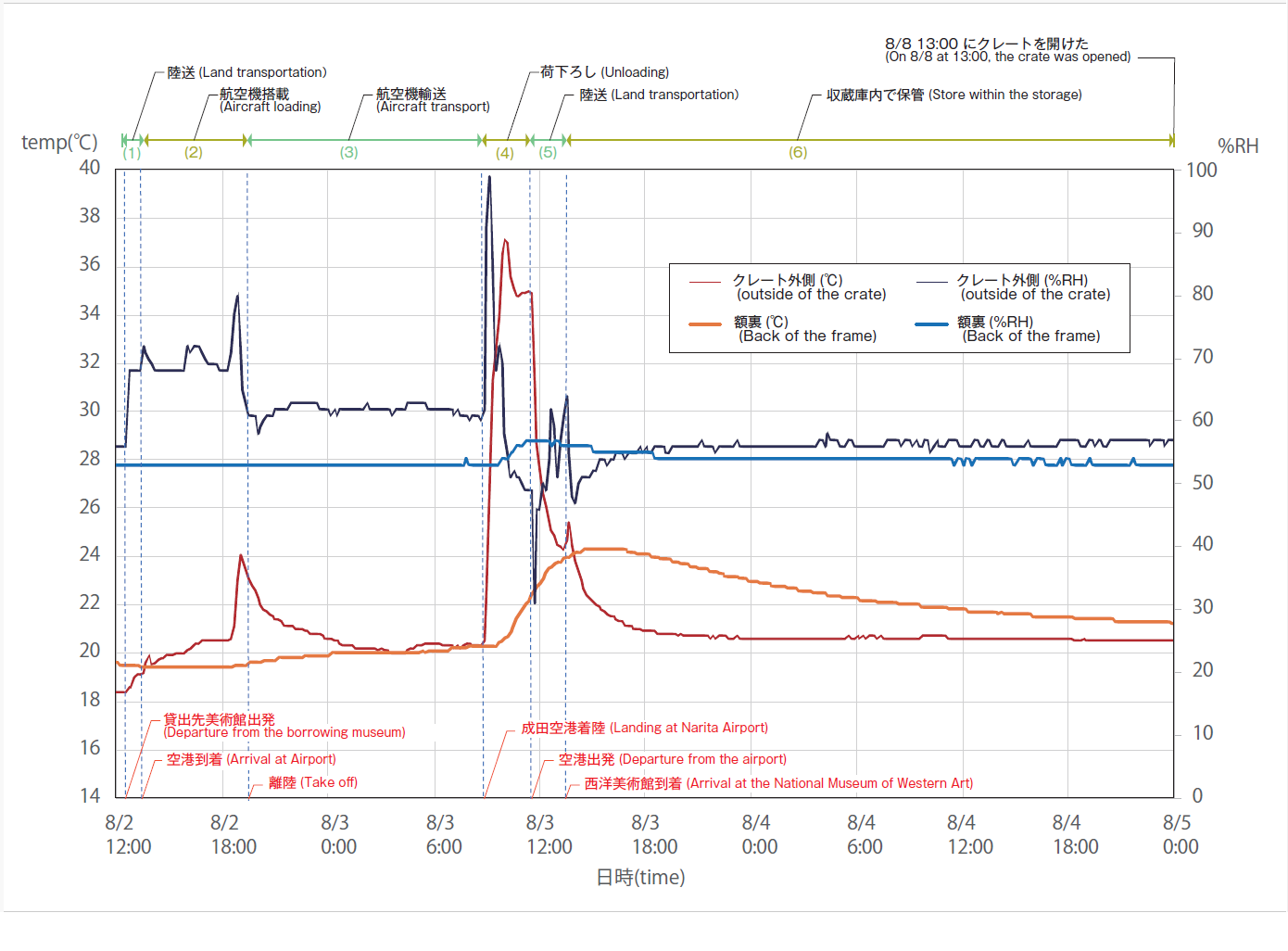
Fig. 5: **
The use of reusable crates can significantly reduce the volume of materials used for crate construction and subsequently discarded, as well as the labor, time, and costs required to manufacture, transport, and dispose of crates. However, the greatest challenge for the National Museum of Western Art, as for other museums, is a lack of sufficient storage space to house multiple reusable crates (this shortage of space has been a primary reason for our use of disposable crates thus far). To resolve this issue, one possible solution would be to rent a warehouse for crate storage, although this would incur additional costs and require strict environmental control to prevent issues such as mold and insect infestation, which could render the crates unusable. Personally, I hope that museums in Japan will eventually be able to get a system like those seen abroad, in which specialized contractors own the reusable crates and lease them to museums.
Takashima Miho
The National Museum of Western Art
* Currently, this reusable crate (prototype) is on view at the National Museum of Western Art in the permanent collection gallery, and is scheduled for display until the end of January 2025. Also, reusable crates of the same type are scheduled to be used for the 2024 National Museum of Art Collection Plus***.
** Fig. 5: Reference material illustrating the crate’s effectiveness. The graph shows changes in temperature and relative humidity(RH) when a painting was returned by air from a museum in the Netherlands. Temperature and RH were measured at two locations: at the back of the painting inside the crate, and outside the crate. The transportation process involved shipping the crated artwork to the airport in the Netherlands on a specialized art transport vehicle (see [1] at the top of the figure), loading it onto a passenger aircraft ([2] in the figure), and after arrival at Narita Airport in Japan, reloading it onto another specialized art transport vehicle and delivering it to the museum ([4] and [5] in the figure). Following a period of acclimatization in storage, the crate was opened ([6] in the figure).
The temperature and RH measured outside the crate (in red and dark blue) fluctuated significantly, especially before and after takeoff and landing, likely due to exposure to outside air while loading and unloading the crate on and off the aircraft, as well as changes in air pressure during takeoff and landing. Meanwhile, fluctuations in temperature and RH measured at the back of the painting inside the crate (in orange and light blue) were greatly minimized.
*** National Museum of Art Collection Plus is one of our cooperative programs in which museums can apply to host an exhibition consisting of works from the National Museum of Art Collection along with works from their own collection in Japan.



